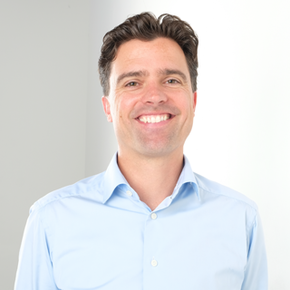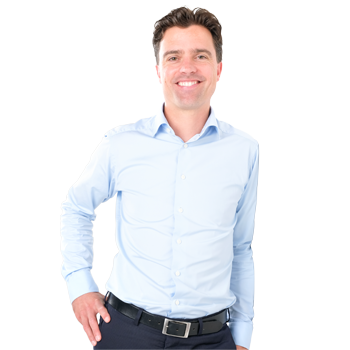DHL is the world leader for international express deliveries, both by land and air. The company is also Number One for ocean freight and contract logistics. DHL provides a large number of express shipments every week in Europe alone. This creates an extensive and complex planning problem. Together, CQM and DHL developed a software tool for generating weekly schedules. The people involved at DHL are very enthusiastic!
Complexity is in the size
DHL works for express shipments, among other things, with a so-called Day Definite Network. The emphasis is on delivery at an agreed time and less on delivery as quickly as possible. For the latter, there is a Time Definite Network. In Europe, the Day Definite Network connects approximately 600 terminals, the departure and arrival locations for around 200,000 shipments per week. Those shipments are consolidated into gateways, of which there are about 60 in Europe. The planning question is twofold: a routing must be determined for each shipment, but the linehauls must also be determined. A linehaul is a routing for a transport unit, i.e. truck, van, etc.). That is a complex planning problem.
Antal Maas, Project Manager Network Planning Tools: “The complexity lies mainly in the size: the network is large, there are a lot of shipments and we have to deal with a lot of restrictions. Think of delivery time requirements of the shipments, opening and closing times of gateways, driving time legislation, capacities of transport units, timetables of ferries and time windows of countries. We aim to optimize the linehaul of the international network.” Heinz Vogel, Manager Network & Planning Europe, Road: “DHL operates in an increasingly rapidly changing environment. Locations, volumes, facilities, customer profiles, flow sizes, etc. are subject to constant change. This requires increasingly frequent adjustments to the basic planning. Until now, we make a new one once a month, in the future that will shift further to dynamic planning.”
Developing a suitable tool yourself
Hence the need at DHL for a software tool with which those weekly schedules can be generated in a reasonable time. Because there is no off-the-shelf product that meets all the requirements, DHL decided to develop such a tool together with CQM. As a first step, CQM and DHL conducted an extensive analysis to map the requirements that DHL places on such a tool. Then the actual development of Lot, the Linehaul Optimization Tool, began. It builds on PlaNet Europe, the prototype that CQM previously made for DHL.
What does the Lot tool do?
Lot generates international linehauls on the gateway network, in parallel with the routing for the shipments through the European network. The output of Lot is a so-called schedule, which consists of a combined planning for the transport units and the shipments. Moreover, it also takes into account all kinds of local restrictions such as the availability of docks, etc. Sven Bobzin, Scheduling, Routing & Capacity Manager, calls it 'a tactical planning with operational feasibility'. Lot minimizes the total cost. This concerns the linehaul costs (including toll and costs for ferries) and the costs for transhipment at gateways. Lot uses the MACE (MAtrix Computation Engine) developed by CQM to calculate travel times and distances between the terminals and to geocode locations.
Lot supports evaluation and validation of a schedule using a user-friendly user interface. This makes it possible to show details and sections of the schedule and to generate all kinds of output. Adjustments are quick and easy to make. What is special is that Lot shows the integral consequences of changes for the entire network by comparing two schedules down to the smallest detail and generating corresponding difference reports.
What-if analyzes and short calculation time
The development of Lot has been successfully completed. The program is used by DHL Express's Network Planning Group in Brussels to generate weekly schedules for European Day Definite express transport. The calculation time required to generate a weekly schedule has become very short. This offers DHL new possibilities, for example to assess the stability of a solution. Antal Maas: "That also makes it easier to 'sell' the schedules to the rest of the organization (the country organisations) and it offers significant opportunities for improvement in the total planning."
Sven Bobzin fully agrees: “Not only do we provide a good schedule, but it is also locally feasible and implementable because Lot also takes local restrictions into account. This also makes it easier for the European organization to carry out its task vis-à-vis the country organisations.” He adds: “The short computation time has made it possible to perform what if analyzes and compare the results. The way in which this is done also provides insight into the impact of changes on the entire network. In short, Lot makes it possible for us to take the step from scheduling to real network management.”
Lot will be adapted to generate weekly schedules for National Day Definite Networks. These adjustments are necessary because there are different restrictions in the national scope than internationally. So there is still work to be done: “The main challenge now is to get the whole thing properly implemented,” says Antal Maas.
The role of CQM
Antal Maas is very satisfied: “CQM has completed the project in accordance with the agreed schedule. That is special because software development projects almost always run late and we had a very tight schedule in this project. The result also meets the requirements that were agreed in advance. Heinz Vogel had previously dealt with CQM at Danzas. “After an intensive comparison with other parties, we chose CQM,” he explains. “If Lot now also shows its value in daily practice, then there are also opportunities for CQM in other regions or in other networks, such as time definition.”
The CQM employees involved were on location at DHL for a few days every week. That has worked very well. Antal Maas: “The group has empathized well and the frequent personal contact and short lines of communication have contributed greatly to a good mutual understanding. It is actually not possible to properly record the Business Requirement Specifications (BRS) in advance. The interaction between DHL and CQM during the project made it possible to further detail and refine the BRS during the project.” Heinz Vogel agrees: ”The CQM team showed itself to be very committed, and very cooperative. The discussions were constructive and open-minded. It gave us a good feeling.”
In their opinion, CQM has fully lived up to its name as an expert in the field of algorithms: “Whereas a requirement of approximately 15 hours was formulated in advance, this eventually became less than an hour. This offers DHL enormous additional possibilities to assess the stability of a solution, for example. A masterful achievement!”
Do you also want to optimize your planning?
Please contact Peter Hulsen.
Publication and/or duplication of texts/images is only permitted following explicit permission from CQM.
Photo credits: Pixabay.


